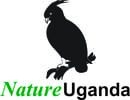Ecological Study of Entebbe International Airport

UCAA through BHWC also carries out Wildlife Risk Assessment, by conducting wildlife risk assessments to identify and evaluate the risks posed by wildlife to aircraft operations. It also collaborates with international organizations and local institutions to train conservationists and airport staff in wildlife hazard management. These efforts by UCAA underscore the commitment to balancing aviation safety with environmental conservation.
A detailed Ecological Study has been recommended to identify the different bird and other terrestrial wildlife species including the ‘Unknown ‘species and their population indices in and around Entebbe International Airport.
This will allow environmental specialists to provide recommendations on how to manage wildlife hazards at airport, and propose the mitigation measures to address the environmental impacts.
What is an Ecological Study?
An Ecological Study (ES) is a scientific study that analyzes data at the population or community level, rather than the individual level.
The National Environment Management Authority (NEMA) in Uganda provides guidelines for conducting ecological studies as part of environmental assessments. These studies are crucial for understanding the potential impacts of development projects on the environment and ensuring sustainable practices.
Objectives of the ES
- Study the activity and behavioural patterns of birds and other terrestrial wildlife species.
- Identify the most bit species (airstrikes) and assess attractants for at least 10 most hit species including where available the nesting, resting and roosting habits and their habitats in and around the airport.
- To assess possible effects of climate change and human land use activities of wildlife activities and behaviour from 2010 to date.
- To devise and recommend means of minimizing the interference of wildlife with aviation so as to counter any possible incidents/accidents arising from those collisions.
- Prepare an ecological study report with recommendations on how to manage wildlife hazards at Entebbe International Airport.



